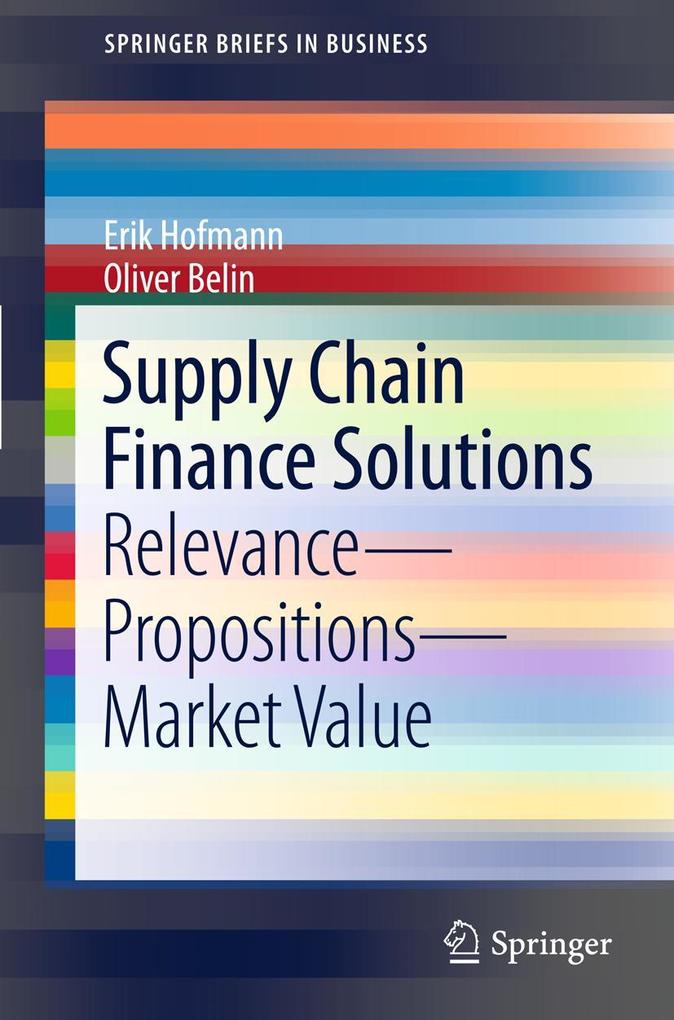Bücher versandkostenfrei*100 Tage RückgaberechtAbholung in über 100 Filialen
Unser Herbst-Deal: 15% Rabatt12 auf Spielwaren, English Books & mehr mit dem Code HERBST15
Jetzt einlösen
mehr erfahren
Zustellung: Mo, 20.10. - Mi, 22.10.
Versand in 2 Tagen
VersandkostenfreiBestellen & in Filiale abholen:
Supply Chain Finance Solutions explores this new discipline, investigating its need and nature, characteristics and enablers. The authors close the gap in research on the topic by providing latest information on business concepts and the SCF market.
The book "Supply Chain Finance Solutions" offers orientation in the new discipline of Supply Chain Finance (SCF) by investigating the need for and nature of SCF, along with its characteristics and enablers. Due to the novelty of the Supply Chain Finance approach, there are still many knowledge gaps. This lack of research leads to uncertainties about the successful implementation of SCF solutions within companies as there is little quantified evidence on the achievable cost savings and other potential benefits. The authors close this gap by providing the latest information on business concepts and the SCF market. Based on a sample SCF model, the worldwide market size for such solutions and potential cost savings to companies engaged in SCF are analyzed. The work underlines the generally agreed-upon attractiveness and future relevance of SCF solutions by creating win-win situations; for all actors in the end-to-end supply chain as well as for external service providers.
Inhaltsverzeichnis
Introduction. - Relevance of WCM and its weaknesses. - Characteristics of SCF. - Segmentation of SCF solutions. - Value proposition of SCF. - The market size for SCF solutions. - Concluding remarks. - Annex: OECD non-OECD exports per country in 2006. - OECD non-OECD imports per country in 2006. - Invoice processed and value per industry 2006. -(Aberdeen Group, 2006. - Days inventory held (DIH) per Industry. - Days Sales Outstanding (DSO) per Industry. - Days Payables Outstanding (DPO) per Industry. - Cash Conversion Cycle (CCC) per Industry. - Literature.
Produktdetails
Erscheinungsdatum
28. März 2011
Sprache
englisch
Auflage
2011
Seitenanzahl
100
Reihe
SpringerBriefs in Business
Autor/Autorin
Erik Hofmann, Oliver Belin
Illustrationen
XIII, 85 p.
Verlag/Hersteller
Produktart
kartoniert
Abbildungen
XIII, 85 p.
Gewicht
166 g
Größe (L/B/H)
235/155/6 mm
ISBN
9783642175657
Bewertungen
0 Bewertungen
Es wurden noch keine Bewertungen abgegeben. Schreiben Sie die erste Bewertung zu "Supply Chain Finance Solutions" und helfen Sie damit anderen bei der Kaufentscheidung.











